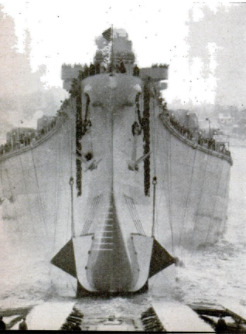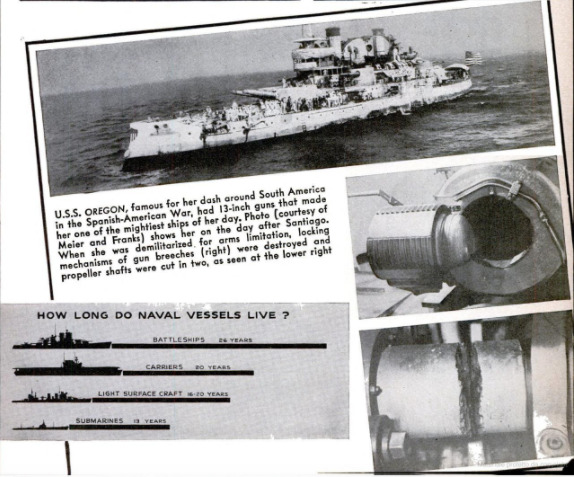-
Title (Dublin Core)
-
The irreplaceable characteristics of warships
-
Article Title and/or Image Caption (Dublin Core)
-
Title: Why do we keep on building battleships?
-
Subtitle: With planes challenging their supremacy, they still have work to do in war at sea
-
extracted text (Extract Text)
-
PEELING out of formation and whining down from the sky, 20 Japa-
pra dive bombers head for a U. S. battleship cruising off the Solo-
mon Islands. Aboard the surface ship, which bristles with automatic
antiaircraft cannon, gun crews are ready for them. Eight minutes of
ear-shattering fire—and the wreckage of 20 planes litters the sea.
More enemy planes are on the way, from their carriers. They try
an up-to-date strategem. Dive bombers appear first, to make the bat-
tleship elevate all its guns. A moment later, torpedo planes swoop in
from the side, barely skimming the water to launch their “fish.” The
attempted surprise fools no one. Again the battleship’s guns loose an
impenetrable screen of steel. Thrown off his aim, a Nipponese pilot
lets go his torpedo too high, and it sails harmlessly over the warship’s
stern. Now U. S. planes from a supporting carrier are getting into the
fight, and the remaining Jap aircraft flee. At terrific cost, they have
scored only a single hit on the battleship, with a 500-pound bomb. It
has landed on top of a turret, where a battleship carries some of its
heaviest armor. So slight is the damage that, less than three weeks
later, the battle wagon enters a major naval engagement and sends
to the bottom four large Japanese warships with shells hurled from its big guns.
Just made public by the Navy, these new details of the battles of Santa Cruz
and Guadalcanal, last October and November, offer an answer to the query of Al
Williams, all-out plane enthusiast, “What have battleships done in this war,
but sink?"
When Representative Carl Vinson, head of the House Naval Affairs Committee,
expressed his opinion that the aircraft carrier had replaced the battleship as the
backbone of the fleet, not a few persons agreed with him, and many went farther.
Should we keep on building huge, costly battle wagons to serve as targets for
bombs and aerial torpedoes? Alrcraft carriers were a novelty In warfare. Their
first achievements were spectacular successes, and airplanes showed that under
favorable circumstances they could sink battleships —a fact that had never been
doubted in well-informed circles. But carriers themselves are now proving as
Vulnerable as naval experts predicted before the war. And against alr power, the
superdreadnought is demonstrating its ability to strike back.
‘Why naval powers go on building battleships deserves closer looking ino. First,
just what are they for? Fighting enemy battleships is their specialty—and, in
itsele, reason enough for their necessity. Despite the heroic action of the U. S.
cruiser San Francisco, which stood up to a Japanese battleship at point-blank
range and crippled it so severely that other forces were later able to sink it, for-
tune cannot always be expected to favor brave men in outgunned ships. To keep
the enemy from our shores, to carry the war to his own, and to destroy his fleet
if it will come out and fight —or to keep it uselessly riding at anchor in port—our
battleships must be more than a match for his
Battleships have other important tactical uses. One or more may guard a task
force, often confused by headline writers with a battle fleet. Actually the term
‘means just what it implies—a group of ships assigned to a specific mission, such as
protecting a convoy, seizing an enemy-held island, or running down & troublesome
commerce raider.
Big guns of a battleship outrange those of all other craft, and its secondary
battery of smaller guns disposes of close-range, hit-and-run torpedo attack by
destroyers. One of the outstanding changes in’ battleship design, to meet the
challenge of air attack, has been its phenomenal increase in antialrerat fire power.
Up-to-date capital ships carry sky guns ranging in size from the 20-millimeter
Oerlikon, which blasts dive bombers with 400 quarter-pound shells a minute, up
to the double-purpose five-inchers of the secondary battery, which can be elevated
to bring down high-flying horizontal bombers. An in-between size, the 11-inch
gun, lends itself especially to quadruple mounting. American design favors ar-
ranging the four barrels in a horizontal row, contrasting with the two-above-two
mounting of British pom-poms. Armor
shields for the smaller guns, and turrets for
the largest, now protect the gun crews from
fying bomb splinters.
For all its power, critics may point out,
a battleship today seldom travels alone.
Actually it is too valuable to risk an am-
bush by enemy surface ships, or a torpedo
hit from a lurking submarine. A pair of
heavy cruisers and five or six destroyers
provide about the minimum escort required
for reconnaissance and anti-submarine
screening. “Flak ships” with the sole mis-
sion of antiaircraft fire supplement a bat-
tleship's ability to defend itself, as do air-
craft carriers. Without carrier support,
capital ships cannot safely approach enemy
air bases—a lesson learned by the British
off Malaya at the cost of the new battleship
Prince of Wales and the battle cruiser Re-
pulse, sunk by only 40 Japanese planes.
Of the tactical value of aircraft carriers,
in fact, there can be no question, despite
their high rate of mortality. In the Battle
of the Pacific, at this writing, we have lost
four—the 14,700-ton Wasp, the 20,000-ton
Hornet and Yorktown, and the 33,000-ton
Lexington. The toll of Japanese carriers has
been considerably more severe. But so long
as one remains afloat, it represents a ship
of no mean striking power. Unique in
naval history was our Midway Island vic-
tory in June of 1941—the greatest naval
engagement since Jutland, fought almost
‘wholly by opposing aircraft carriers! Fully
aware of the need for ships of this class,
the Navy has a substantial total of large
ones under “rush” orders. In addition, a
number of ships begun as 10,000-ton cruis-
ers are being completed as converted air-
craft carriers. Significant in this connection
is the observation of one authority—that if
the carrier were to replace any other class
of warcraft, it would not be the battleship
but rather the large cruiser. Because of a
cruiser’s comparatively light armor, it
makes a far better target for carrier planes.
At the same time, a carrier can take over
the duties of reconnaissance formerly car-
ried out by cruisers. This last, however,
assumes favorable flying weather. In con-
trast, surface ships, including battleships,
operate in spite of fog and darkness.
Numerous night engagements have been a
feature of the second world war. In these,
the value of air power has been negligible,
with planes kept grounded because of diffi:
culty in finding and landing on their carriers.
At Pearl Harbor, Japan had demonstrated
what carrier-based planes can do to bat-
tleships under practically ideal conditions.
Taken by treacherous surprise, the motion-
less and weakly defended ships made almost
as perfect targets as painted outlines on a
practice range. Yet, of the eight battleships
there, only one—the Arizona, about to be-
come over-age—was wrecked beyond repair.
The over-age Oklahoma capsized, but may
be salvaged. None of the rest suffered mor-
tal injury, and damage to three was so
slight that they were back in service within
a few months.
Again, in the pursuit of the German bat-
tleship Bismarck, that mighty vessel showed
its stamina. Even after planes had put its
steering gear out of commission, the British
battleships King George V and Rodney had
to bombard it with about 700 shells before
a cruiser could safely close in and sink it
with torpedoes.
As to bombing attacks on battleships, few
laymen realize that it is perfectly possible
to see a bomb dropping, and change a ship's
course quickly enough to dodge it. Natural-
ly the feat requires split-second co-ordina-
tion of men and machines, but even big
vessels can do it.
To counter this annoying habit, airmen
have developed “pattern bombing.” In this
scheme, formations of planes attempt to
drop their missiles in such a design that a
ship cannot escape, no matter which way it
turns. Some imaginary patterns, reasonable
from a geometrical point of view, are repro-
duced here. Actual methods used by naval
powers ate sizicllv guarded secrets.
Compare bombing with shellfire, however,
and some popular illusions about air power
will evaporate. Penetrating a battleship's
tough hide with a projectile takes plenty of
velocity. Now, unlike a shell, a bomb de-
pends “solely upon gravity for its speed.
If it fell in a vacuum, a bomb would pick
up speed without limit. Since it does no such
thing, air resistance imposes a maximum
or “terminal” velocity, which a bomb can-
not exceed no matter how far it falls. No
plane has ever reached an altitude sufficient
to give a bomb this terminal velocity, but it
has been calculated, and turns out to be
about 630 miles an hour. A pilot of a mod-
ern pursuit plane could actually power-dive
fast enough to outpace the bomb and fly
under it before it hits its target! In prac-
tice, a speedy dive bomber looses a projectile
that strikes, from 2,000 feet, at something
like 300 miles an hour. Contrast these fig:
ures with the speed of a naval shell, hurled
from the muzzle of a big gun at nearly 2,000
miles an hour, and still traveling at 1,000
miles an hour when it plunges upon the deck
of an enemy ship beyond range of vision.
Of course, it is possible to imagine an aerial
bomb accelerated by a built-in rocket de-
vice. But a shell, equally adaptable to a
rocket booster, would still be the more de-
structive missile.
For defense against hostile gunfire, a bat-
tleship carries by far the heaviest armor of
any class of warship. The “belt” along its
sides, shielding nearly all its vital parts
from shells of flat trajectory, may measure
from 14 to 16 inches in thickness. One or
two armored decks, with a total thickness
of as much as ten inches, resist the impact
of high-angle shellfire and of air bombs.
Turrets and their deep revolving mounts,
called barbettes, receive heavy protection.
Tn modern designs, more than 40 percent of
a battleship’s weight consists of armor.
Compare the pitifully meager armor that an
aircraft carrier can carry—its flight deck,
the most important part to protect, would
be impossibly top-heavy—and it becomes
clear why battleships can slug it out while
carriers go down.
Formerly all armor plate more than four
inches thick was forged, a time-consuming
process. One American plant now turns out
armor for battleships and other warcraft
eight to 10 times as fast, by rolling it on
the world’s largest plate mill. Some of the
slabs weigh more than 50 tons apiece, and
‘measure up to 195 inches in width.
Hit a battleship below the belt—in other
words, under the side armor, which extends
only a short distance from the water line
toward the keel—and you will have struck
its most vulnerable spot. Because of the
hammerlike blow with which water trans-
mits an explosion, a near miss by an air
bomb fused for delay action can inflict seri-
ous hull damage. Mines and torpedoes, both
now carried by airplanes, offer added dan-
ger. Even a single torpedo hit means an
eventual trip for repairs. Though still afloat,
a badly damaged ship may be slowed enough
to become the prey of submarines, which
could not catch up with it otherwise.
Many ingenious schemes have been ap-
plied to minimize underwater damage. One
plan is to make the outermost compartment
of the battleship a false hull or “blister,”
leaving it empty. In this idea, the blister
explodes the torpedo. Compressible air,
within, absorbs some of the force of the ex-
plosion and evenly distributes the rest. The
inertia of liquid in inner compartments helps
their bulkheads to take up more of the
shock. Since a battleship’s hull is large
enough to be highly subdivided into water-
tight compartments fore and aft, it can take
a good many torpedo hits and remain in
action.
Concerning the increased peril brought
about by aerial torpedoes, it has become
traditional that each innovation in naval
weapons has promptly been countered by a
means of defense. Magnetic mines, for ex-
ample, lost their terror when ships were
equipped with degaussing cables.
In the evolution of battleships, both Brit.
ain and America have been pioneers. Two
vessels in particular have made naval his-
tory. H.M.S. Dreadnought, the prototype of
its class, introduced in 1906 a main battery
consisting entirely of big guns. Three years
later, the U.S.S. Michigan set the style for
present-day arrangement of all main turrets
along the center of the ship, permitting the
full force of a broadside to be delivered
either to port or starboard. Practically all
modern men-of-war follow these basic prin-
ciples, even though today’s capital ships
dwarf the earlier ones.
Other American innovations include the
first steam warship; the first screw-pro-
pelled man-of-war; the first ship-based
take-off and landing of a plane; and the
supposedly modern art of zigzagging. Fly-
ing in the face of naval tradition before
that time, the maneuver was introduced to
dodge shellfire as early as the Spanish War.
One of the most powerful warcraft of her
time was the 10,000-ton battleship Oregon,
famed for her record-breaking dash around
Cape Horn in time to help destroy the Span-
ish fleet at the Battle of Santiago in 1898.
The four 13-inch guns of her main battery
‘were the most formidable in existence. Now,
after years of honorable retirement, the Ore-
gon is going to serve her country again. The
historic vessel will be scrapped, and reborn
in mighty fighting ships called for by our
huge construction program.
Since naval designers attain the best com-
promise between guns, armor, and speed in
warships of great dimensions, battleships
are reaching unheard-of size today. By
now, although the Navy does not announce
commissionings in wartime, four sister ships
of the new, 35,000-ton North Carolina and
Washington may reasonably be assumed to
be in service. And the first two of five
projected 45,000-tonners, the Jowa and New
Jersey, have been launched.
This 45,000-ton figure, at least, was the
size originally announced when they were
laid down in 1940. More recently, the Navy
has made it known that their design has
been changed to incorporate results of
lessons learned in the current war. Exact
figures for their displacement are now a
wartime secret. However, the New Jersey
was said by the Navy to have a slightly
greater tonnage displacement than her sis-
ter ship, the Iowa, when she slid down the
ways into the Delaware River at the Phila-
delphia Navy Yard. She will be the heaviest
battleship ever constructed.
Some doubt exists about plans for a fu-
ture 58,000-ton Montana class proposed
some time ago. The Navy has announced
no decision not to build them, but their con-
struction may be postponed in-
definitely, in favor of more urgent
shipbuilding. Critics point out that
the ships quite possibly might not be
completed in time to see service in
this war. Every increase in size im-
poses added difficulties in negotiat-
ing shallow channels, in finding suit-
able harbors, and in being dry-docked
for overhaul and repair. Too, there
may be a point at which a battleship
becomes so huge and expensive that
its loss from any cause would be
a national calamity. Perhaps two
smaller battleships, built at some-
thing like the same total cost, would
be more useful than the big one.
‘Whatever we do build in battleships,
however, seems beyond the power of
aviation extremists to criticize suc-
cessfully.
-
Contributor (Dublin Core)
-
Alden P. Armagnac (Article Writer)
-
Language (Dublin Core)
-
eng
-
Date Issued (Dublin Core)
-
1943-04
-
pages (Bibliographic Ontology)
-
62-72
-
Rights (Dublin Core)
-
Public Domain (Google Digitized)
-
Archived by (Dublin Core)
-
Matteo Ridolfi
-
Marco Bortolami (editor)
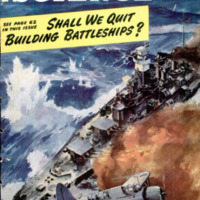 Popular Science Monthly, v. 142, n.4, 1943
Popular Science Monthly, v. 142, n.4, 1943
 Schermata 2022-02-22 alle 15.18.10.png
Schermata 2022-02-22 alle 15.18.10.png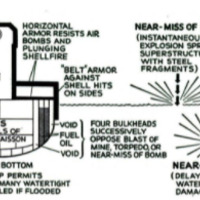 Schermata 2022-02-22 alle 15.18.01.png
Schermata 2022-02-22 alle 15.18.01.png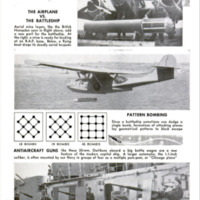 Schermata 2022-02-22 alle 15.17.53.png
Schermata 2022-02-22 alle 15.17.53.png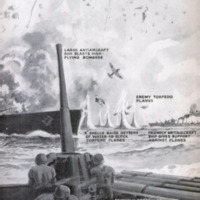 Schermata 2022-02-22 alle 15.17.44.png
Schermata 2022-02-22 alle 15.17.44.png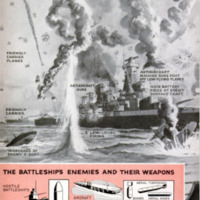 Schermata 2022-02-22 alle 15.17.37.png
Schermata 2022-02-22 alle 15.17.37.png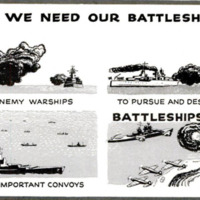 Schermata 2022-02-22 alle 15.16.39.png
Schermata 2022-02-22 alle 15.16.39.png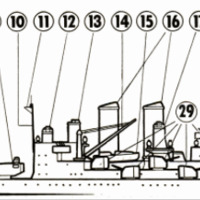 Schermata 2022-02-22 alle 15.16.49.png
Schermata 2022-02-22 alle 15.16.49.png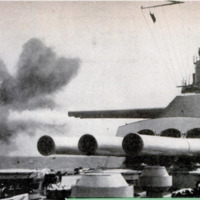 Schermata 2022-02-22 alle 15.16.57.png
Schermata 2022-02-22 alle 15.16.57.png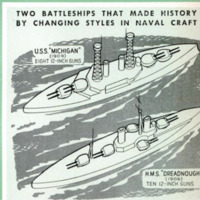 Schermata 2022-02-22 alle 15.17.03.png
Schermata 2022-02-22 alle 15.17.03.png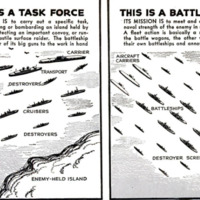 Schermata 2022-02-22 alle 15.17.14.png
Schermata 2022-02-22 alle 15.17.14.png Schermata 2022-02-22 alle 15.17.24.png
Schermata 2022-02-22 alle 15.17.24.png
